Legendary Trans-Bhutan Trail reopens to the world
The 403 km trek is one of the greatest cross-country journeys to take in a lifetime

Helmi Yusof
WHEN countries were in lockdown in 2020 and 2021, the Bhutanese were hacking and slashing their way through dense forests. They were searching for a legendary footpath known as the Trans-Bhutan Trail, which had been buried under brush and bramble for over half a century.
Once upon a time, this 403 km footpath was the only way for people to travel between east and west. It crossed 12 mountain passes and 14 rushing rivers. It wound through 27 villages, 21 temples and four impregnable fortresses. It connected hundreds of communities and sacred sites.
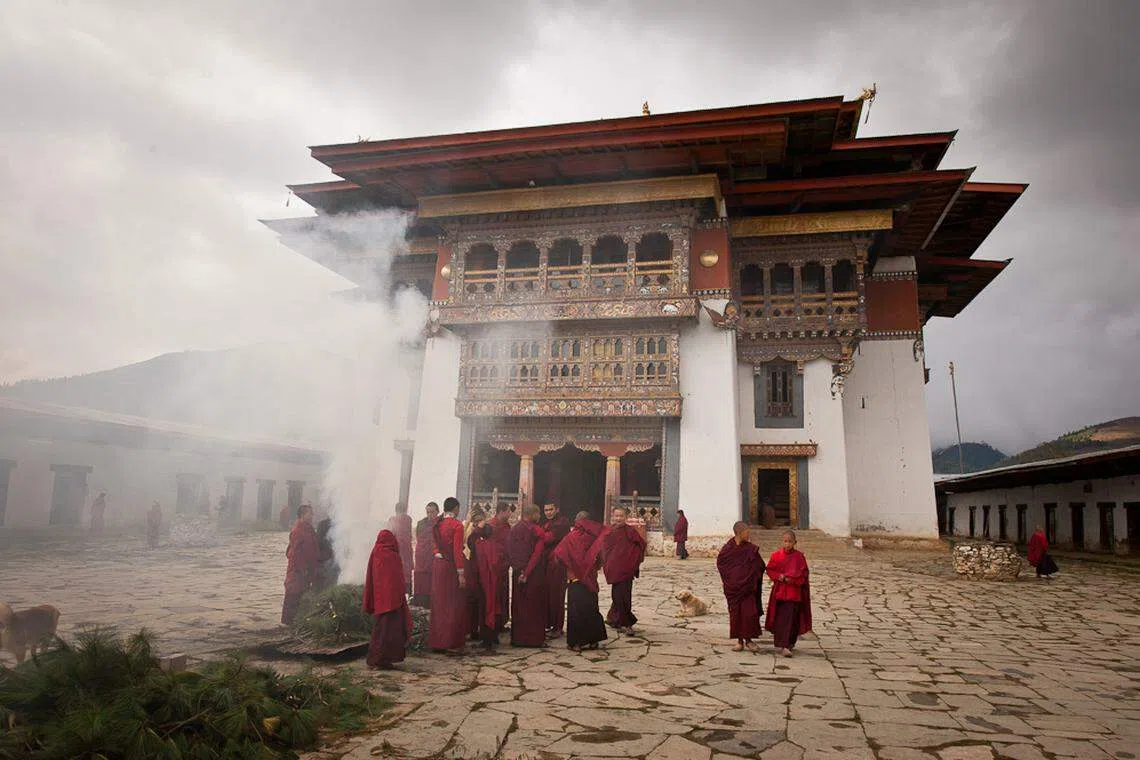
Carved out in the 16th century, the trail was plied by traders carrying wares, runners bearing messages, pilgrims on a spiritual path and soldiers guarding the land. A healthy adult needed five weeks to complete the mountainous trail, with nights spent in guesthouses and homes of kind villagers.
But since the 1960s, the footpath had gone into disuse. Modern road networks arrived, so people got on buses and cars, travelled on highways, and reached their destinations more quickly.
Never mind that the Trans-Bhutan Trail offered breathtaking views of the country’s rich and ever-changing landscape. Never mind that it was the best way to encounter 5,369 plant species and 5,114 animal species, including an astonishing 774 bird types – making the country an ornithologist’s delight. The Bhutanese, like so many other people in the world, opted for speed and ease over flora and fauna.
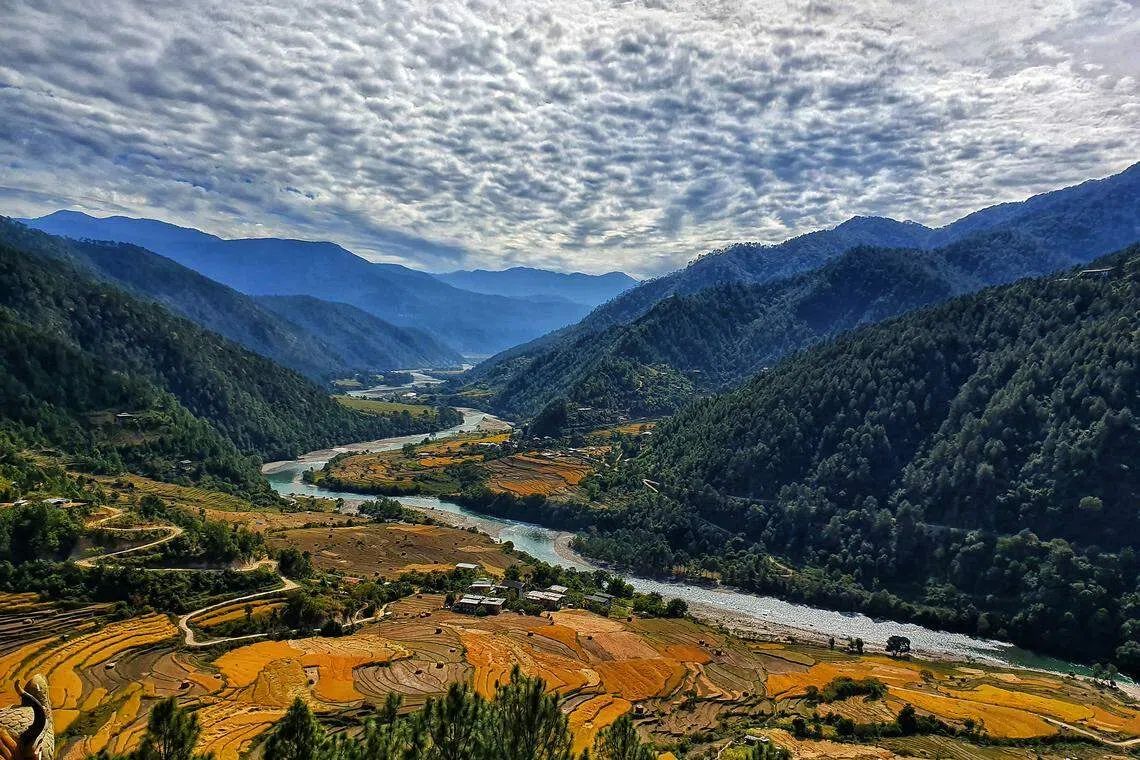
THE STORIES IT TELLS
But in 2018, His Majesty King Jigme Khesar Namgyel Wangchuck announced plans to re-establish the footpath. Too many histories and traditions were being buried together with the trail. The older generations once told of arduous treks and mythical encounters on the trail, but these were now only dimly recalled by younger generations.
Like other countries in the world, Bhutan wanted to counter the contemporary technological distractions occupying its young. It hoped that young Bhutanese would venture on the path and get to know the country’s culture through the remote communities they’d encounter. They would then create their own memories of the trail.
The corollary effect, of course, is that tourists are welcome to join the path and imbibe Bhutan’s past and present. In time, the trail would surely earn a wide reputation as one of the world’s great long-distance treks, one that adventurers would strive to complete at least once in their lifetime.
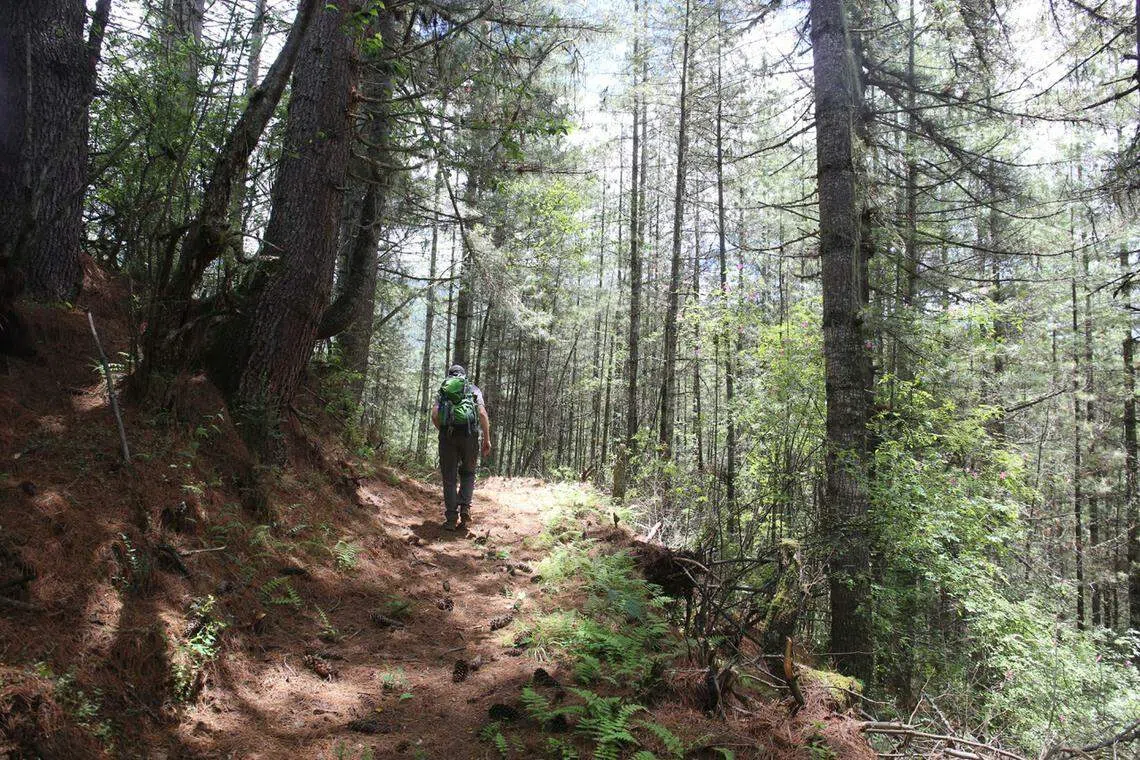
Enter Sam Blyth, founder and chair of The Bhutan Canada Foundation. As a longtime lover of the country, the Canadian had personal reasons for wanting to support the King’s plans. His non-profit foundation stepped up to be the project’s lead international donor.
“Almost 40 years ago, when I first came to Bhutan, I heard stories from the elders of an ancient trail that extended deep into the remote and central regions of the country, and that they walked as children,” he says. “At that time, fewer than 3,000 foreigners a year visited Bhutan and very few went beyond Paro, Thimphu or Punakha (the country’s most popular cities). I dreamt of walking that trail.”
LOOKING FOR LOST ROADS
While the pandemic kept countries in lockdown, hundreds of Bhutanese and foreign volunteers went in search of the Trans-Bhutan Trail, which stretches 403 km from Haa in the west and Trashigang in the east.
“There was very little written record or mapping when we started to research the trail, particularly in the central and eastern areas of the country,” says Blyth. “We held town hall meetings in the villages along what we thought was the route. Many of these meetings were over fireplaces at night to talk to the local people to get their input, and also to the elders to get their stories about the trail and actually find it.”
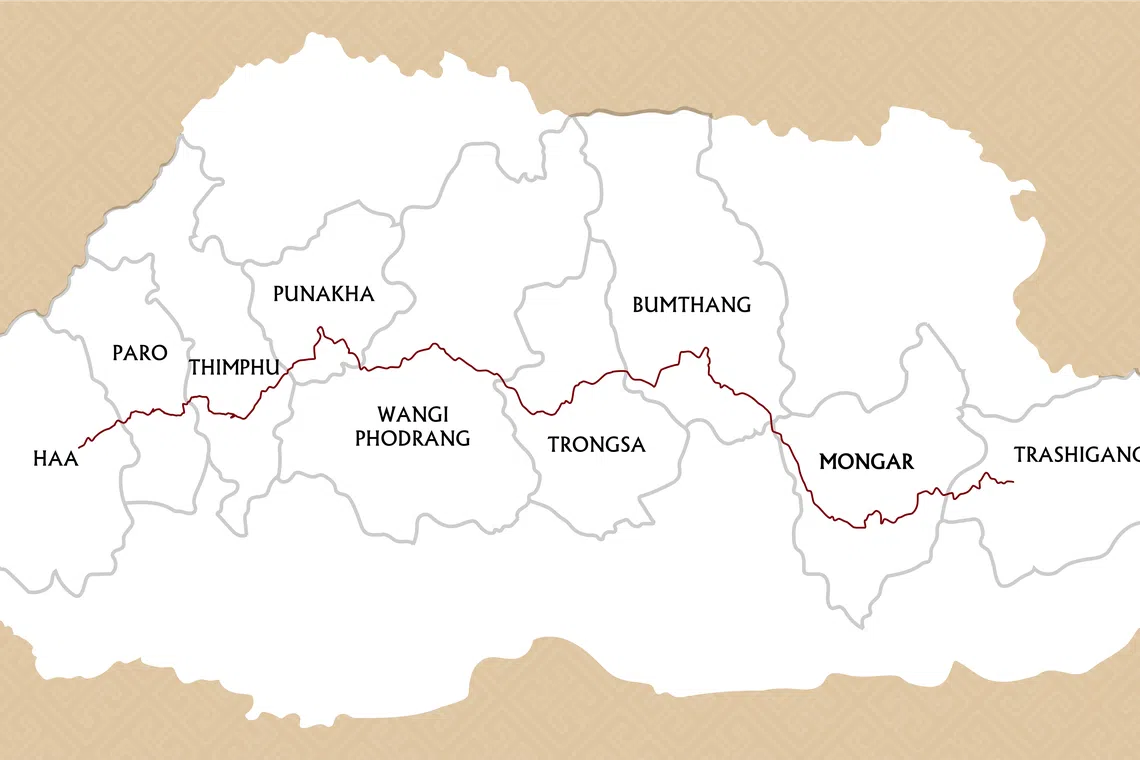
Working with the Bhutan Tourism Council, Blyth describes the two-year process as an “archeological-like excavation” that uncovered rotted pathways, worn stone steps, and countless religious items. “Sixty years is a short time in our natural history. But it’s an age in the life of a trail. Not only was the trail quickly overgrown, many stairways had subsided and many bridges had collapsed, dividing villagers and farmers from their fields and relatives from their families.”
When the trail was finally mapped, more than 900 pandemic-furloughed workers were employed to restore the extensive footpath. They cut and installed over 10,000 stone steps and rebuilt 18 bridges, connecting the trail across rivers and mountains.
The refurbished trail was finally reopened to the public in September 2022 – the same month that the landlocked country reopened its borders to the world for the first time in 2½ years.
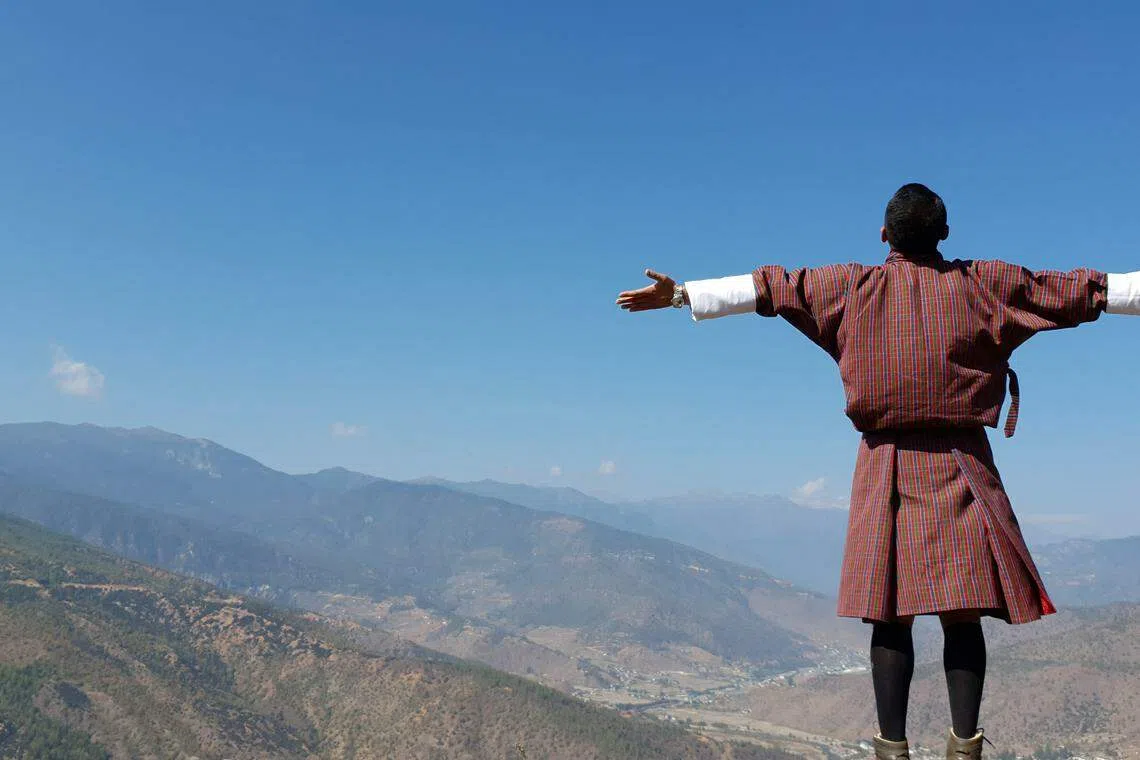
REDISCOVERING A LEGEND
In late September, dignitaries, adventurers and travel writers flew in from all around the world to walk on the re-established trail. Their journey was inaugurated by His Royal Highness Prince Jigyel Ugyen Wangchuck and Prime Minister Lotay Tshering.
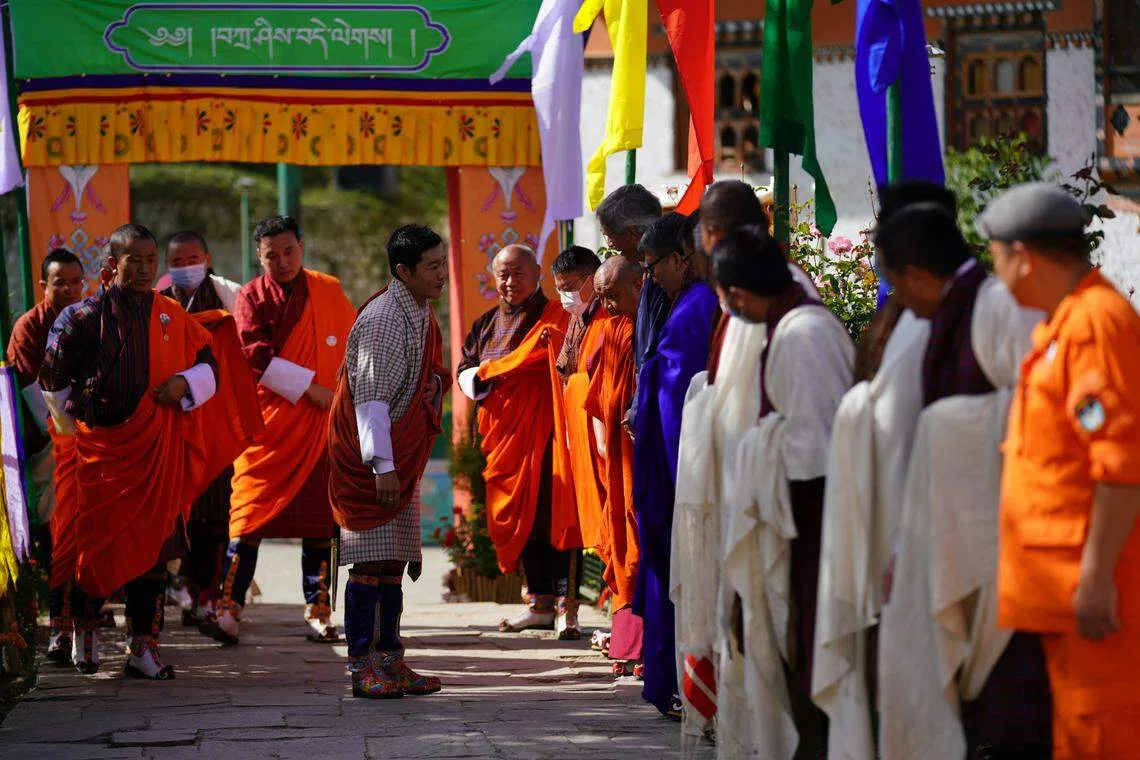
The latter, a 53-year-old doctor-turned-politician, became nostalgic at the sight of the footpath: “The trail that I’m doing now is something that I did when I was 14-years-old, out of necessity. When my late grandmother was then migrating from Thimphu to Phunaka during winter months, I carried her bags and walked 36 km for 11 hours.”
Dorji Dhradhul, chairman of the Trans Bhutan Trail Steering Committee and director general of Tourism Council Bhutan, expressed the local sentiment best: “Today we will walk in the footsteps of our ancestors. To walk this path is to understand what it means to be Bhutanese.”
Over the next few days, smaller groups of people trekked across verdant forests, deep valleys and twisted canyons, at times trudging through mud and rain. But throughout the journey, Bhutan offered colour and light, a profusion of trees, plants, rivers and sky. The mood was jovial but also reverential – everyone sensed the historic significance of walking a 400-year-old ancestral trail that was once the lifeblood of the country. Traces of ancient journeys could still be found in faded rock signages and prayer stone stacks built centuries ago.
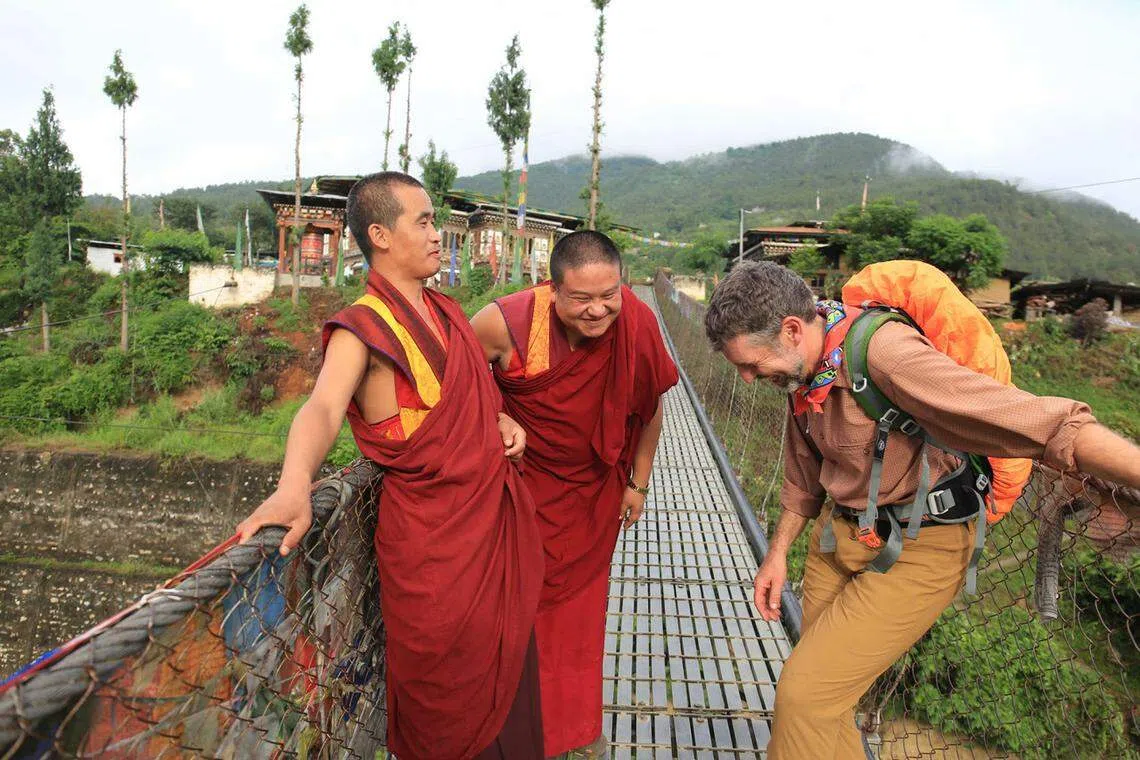
When Bhutan reopened, it had raised its tourist fee from US$65 to US$200 per person per day – money that would go towards the country’s sustainability projects, and help Bhutan remain one of very few carbon-negative countries in the world. (It emits less greenhouse gases than it sequesters.) But the fee felt like a small price to pay for the exhilaration of ambling through sweeping vistas, mysterious woods, rushing rivers and banks of clouds that envelope you like wispy blankets.
PRIORITISING MIRACLES
The trail takes you to several architecturally and historically significant buildings and pilgrimage sites, such as the towering Punakha Dzong, the second biggest fortress in the country, and the serene Druk Wangyal Chortens, a hillock populated with 108 small shrines. It leads to the world-famous Tiger’s Nest, the Buddhist temple perched impossibly on a 900 metre-high cliff face, where a million snapshots are taken every year.
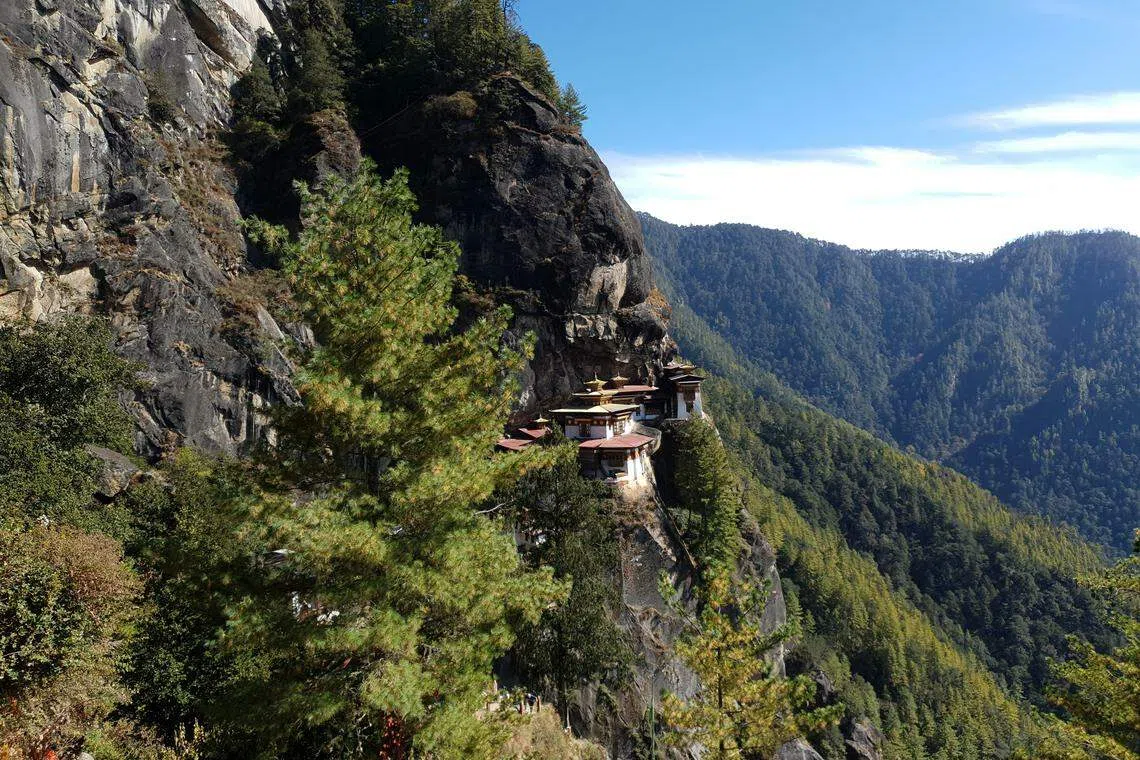
But ultimately it is Bhutan’s natural and elemental beauty that grips your soul. It makes you thankful to be alive and there, to feast your eyes on the forests’ changing shades of green, and to welcome sightings of peafowls, changeable lizards and Assamese macaques. They’re nutrients for the soul. They reassure you that while most countries look to progress, some prioritise the preservation of simple miracles.
The country consistently ranks as one of the Top 10 happiest in the world. But with the reopened Trans-Bhutan Trail now welcoming locals and tourists alike, it looks set to go up a notch or two.
The writer was a guest of Trans-Bhutan Trail (transbhutantrail.com), the non-profit that donated generously to the restoration project and now organises trips along the route.
Decoding Asia newsletter: your guide to navigating Asia in a new global order. Delivered to your inbox. Free.
Copyright SPH Media. All rights reserved.



